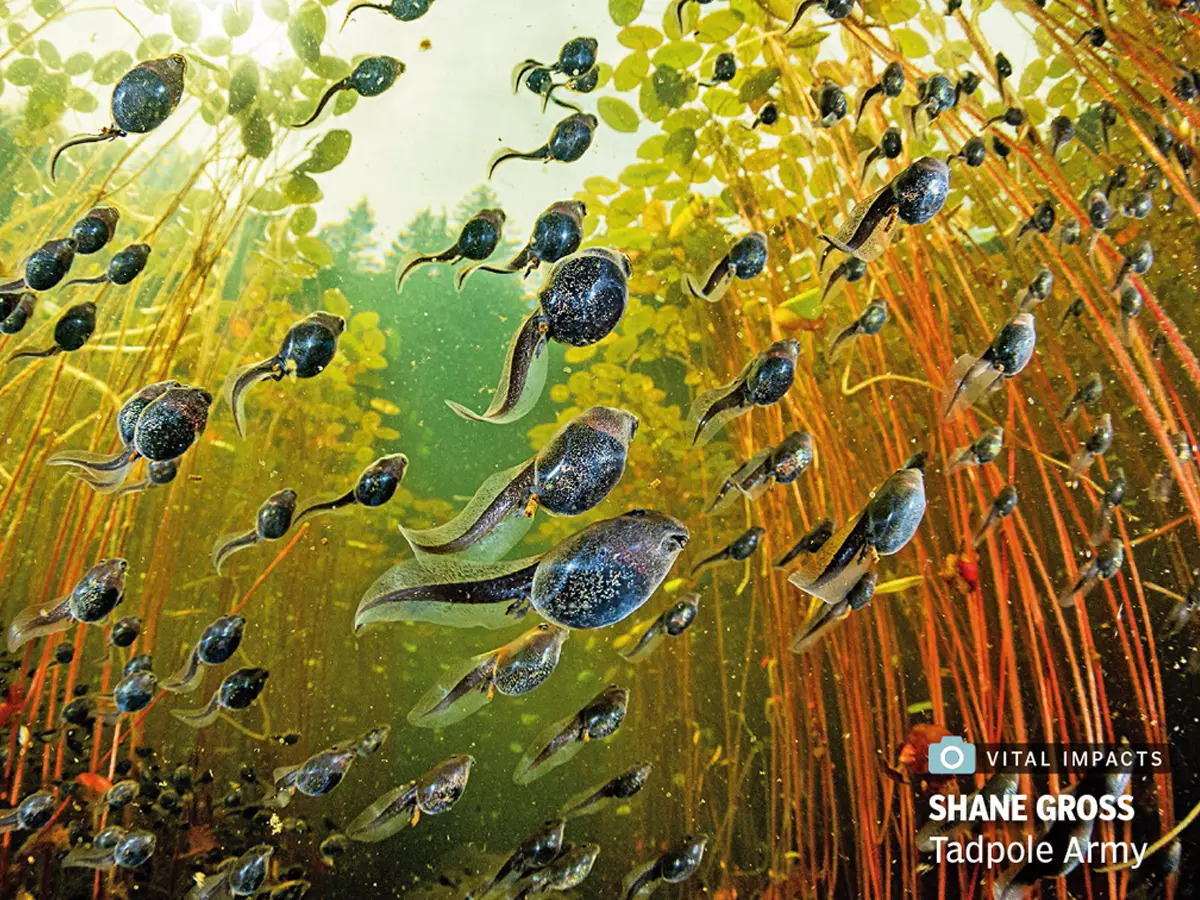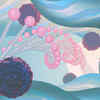‘We’ve lost 73% of global wildlife — images convey both this crisis and the power of hope’
 Ami Vitale
Ami VitaleAmi Vitale is a National Geographic photographer and Nikon ambassador. Speaking to Srijana Mitra Das at Times Evoke, she discusses messages reflected in her new Vital Impacts curated collection:
TE is featuring Vital Impacts in our Collector’s Edition IV — what are its most powerful themes?
■ It is my hope this work will help raise awareness of the urgent challenges facing our planet. In the last fifty years, we have lost 73% of the world’s wildlife — a stark reminder of the magnitude of the biodiversity crisis. However, we can’t feel paralysed by the challenge, nor can we wait for someone else to act — the future is upto us. This year’s collection is more than a series of stunning images — they weave a tapestry of powerful stories, each holding a profound message of hope. They remind us that amidst our most daunting environmental challenges, there are solutions when we make saving nature a priority. This theme is in each image, demonstrating how hope is not only alive but thriving worldwide.
Vital Impacts backs conservation efforts — which projects is this collection supporting?
 LIFE UNDERWATER: Western toad tadpoles forage among lily pads in a mountain lake in British Columbia — only 1 become adults, then facing human-driven pesticides and the chytrid fungus
LIFE UNDERWATER: Western toad tadpoles forage among lily pads in a mountain lake in British Columbia — only 1 become adults, then facing human-driven pesticides and the chytrid fungus
All funds will be donated directly to COICA — the Convening Group of Indigenous Peoples in the Amazon, which supports 511 communities in the nine Amazon basin countries.
In addition, our ‘Saving the Monarchs’ campaign highlights the work of National Geographic photographer Jaime Rojo. With the Monarch butterfly population declining by 90%, efforts are underway to protect their habitat.Sales of Rojo’s photos will support habitat preservation and restoration by contributing to Monarch Watch and FOCEN, the Conservation Fund for the Neovolcanic Axis.
 IN THE ARCTIC: Twin polar bear cubs snuggle and play with their mother, having emerged from their den just hours earlier
IN THE ARCTIC: Twin polar bear cubs snuggle and play with their mother, having emerged from their den just hours earlier
Can you discuss your picture ‘A Hopeful Sign’?
■ This photograph of Bruno, a critically endangered black rhinoceros, resting under a rainbow at Ol Pejeta Conservancy in Kenya, symbolises resilience, hope and the triumph of effort. Once nearly poached to extinction, Kenya’s black rhinos have rebounded, thanks to massive conservation initiatives that have grown their population from just 200 to over 1,000 today. The relocation of Bruno and other rhinos to Loisaba Conservancy marks a new chapter in expanding and safeguarding their habitats in Kenya. This image not only celebrates this success but it reminds us that when we reimagine how to coexist with wildlife, there is hope for endangered species — and for humanity too.
What does this collection show us about ecosystems?
■ These images reveal the delicate balance that sustains life, highlighting how each element in the environment plays a crucial role in maintaining eco-logical harmony — ice sheets, despite their barren appearance, support penguins, seals and polar bears in extreme conditions. Water bodies sustain flora and fauna, breeding grounds and migration paths. Together, these elements create a complex web of interactions where the survival of each species is interconnected with the health of their environment, underscoring the need to conserve natural landscapes in order to maintain biodiversity.

Is biodiversity’s crisis relatively overlooked?
■ Over half of the world’s population lives in urban areas now. Urbanisation and tech nological advancements have distanced humanity from nature, making this issue feel remote. As more people move to cities, this will have extreme implications for biodiversity. However, compelling images can capture things in a way statistics or written reports cannot. Photos showcasing the beauty of ecosystems, the majesty of wildlife and stark environmental degradation evoke empathy — and force us to think about the importance of preserving biodiversity. At Vital Impacts, we’ve witnessed first-hand how a single image can capture the undeniable effects of melting glaciers, de forested landscapes and the plight of endangered species, struggling to survive. These images raise awareness and inspire change — in our first three years as a non-profit, our fundraising efforts have enabled us to donate over$1.5 million to support grassroots environmental initiatives, driving real-world solutions.
Tell us about a picture here which moved you?
■ Brian Skerry’s photograph titled ‘Hope’ encapsulates the essence of what the collection conveys — it features a young sperm whale calf, named by Brian himself. This is the first female born to a family of whales who struggled with producing female offspring. In the matrilineal society of sperm whales, where older, wiser females lead the clans, the birth of this calf signifies a hopeful future for its entire family.
Is photographing nature art or can it save species?
■ Photography is this unfiltered connection to the natural world — it stirs emotions, fosters empathy and cuts through the noise of misinformation. These are not just photographs — they are windows into ecosystems, cautionary tales of our human impact and visual invitations to act. These images compel us to confront the consequences of our choices.
 IN THE ARCTIC: Twin polar bear cubs snuggle and play with their mother, having emerged from their den just hours earlier
IN THE ARCTIC: Twin polar bear cubs snuggle and play with their mother, having emerged from their den just hours earlier
Vital Impacts uses photography’s power to drive meaningful change, supporting grassroots conservation initiatives. Margaret Mead, the author, observed, ‘Never doubt that a small group of thoughtful, committed individuals can change the world. Indeed, it’s the only thing that ever has.’ Vital Impacts embodies this truth — although modest in size, we’ve united an extraordinary community of changemakers.
TE is featuring Vital Impacts in our Collector’s Edition IV — what are its most powerful themes?
■ It is my hope this work will help raise awareness of the urgent challenges facing our planet. In the last fifty years, we have lost 73% of the world’s wildlife — a stark reminder of the magnitude of the biodiversity crisis. However, we can’t feel paralysed by the challenge, nor can we wait for someone else to act — the future is upto us. This year’s collection is more than a series of stunning images — they weave a tapestry of powerful stories, each holding a profound message of hope. They remind us that amidst our most daunting environmental challenges, there are solutions when we make saving nature a priority. This theme is in each image, demonstrating how hope is not only alive but thriving worldwide.
Vital Impacts backs conservation efforts — which projects is this collection supporting?
■ Our mission carries a sense of urgency — every environmental issue needs artful, informed storytelling. The Vital Impacts fine art initiative is working to raise funds for preserving the Amazon rainforest and its rich biodiversity. This year, over 62,000 square kilometres have been burned — an area bigger than Costa Rica. This place is home to over 40,000 plant species, 1,300 bird species and millions of insects. Funds raised will support indigenous communities protecting this critical habitat.

All funds will be donated directly to COICA — the Convening Group of Indigenous Peoples in the Amazon, which supports 511 communities in the nine Amazon basin countries.
In addition, our ‘Saving the Monarchs’ campaign highlights the work of National Geographic photographer Jaime Rojo. With the Monarch butterfly population declining by 90%, efforts are underway to protect their habitat.Sales of Rojo’s photos will support habitat preservation and restoration by contributing to Monarch Watch and FOCEN, the Conservation Fund for the Neovolcanic Axis.

Can you discuss your picture ‘A Hopeful Sign’?
■ This photograph of Bruno, a critically endangered black rhinoceros, resting under a rainbow at Ol Pejeta Conservancy in Kenya, symbolises resilience, hope and the triumph of effort. Once nearly poached to extinction, Kenya’s black rhinos have rebounded, thanks to massive conservation initiatives that have grown their population from just 200 to over 1,000 today. The relocation of Bruno and other rhinos to Loisaba Conservancy marks a new chapter in expanding and safeguarding their habitats in Kenya. This image not only celebrates this success but it reminds us that when we reimagine how to coexist with wildlife, there is hope for endangered species — and for humanity too.
What does this collection show us about ecosystems?
■ These images reveal the delicate balance that sustains life, highlighting how each element in the environment plays a crucial role in maintaining eco-logical harmony — ice sheets, despite their barren appearance, support penguins, seals and polar bears in extreme conditions. Water bodies sustain flora and fauna, breeding grounds and migration paths. Together, these elements create a complex web of interactions where the survival of each species is interconnected with the health of their environment, underscoring the need to conserve natural landscapes in order to maintain biodiversity.

Is biodiversity’s crisis relatively overlooked?
■ Over half of the world’s population lives in urban areas now. Urbanisation and tech nological advancements have distanced humanity from nature, making this issue feel remote. As more people move to cities, this will have extreme implications for biodiversity. However, compelling images can capture things in a way statistics or written reports cannot. Photos showcasing the beauty of ecosystems, the majesty of wildlife and stark environmental degradation evoke empathy — and force us to think about the importance of preserving biodiversity. At Vital Impacts, we’ve witnessed first-hand how a single image can capture the undeniable effects of melting glaciers, de forested landscapes and the plight of endangered species, struggling to survive. These images raise awareness and inspire change — in our first three years as a non-profit, our fundraising efforts have enabled us to donate over$1.5 million to support grassroots environmental initiatives, driving real-world solutions.
Tell us about a picture here which moved you?
■ Brian Skerry’s photograph titled ‘Hope’ encapsulates the essence of what the collection conveys — it features a young sperm whale calf, named by Brian himself. This is the first female born to a family of whales who struggled with producing female offspring. In the matrilineal society of sperm whales, where older, wiser females lead the clans, the birth of this calf signifies a hopeful future for its entire family.
Is photographing nature art or can it save species?
■ Photography is this unfiltered connection to the natural world — it stirs emotions, fosters empathy and cuts through the noise of misinformation. These are not just photographs — they are windows into ecosystems, cautionary tales of our human impact and visual invitations to act. These images compel us to confront the consequences of our choices.

Vital Impacts uses photography’s power to drive meaningful change, supporting grassroots conservation initiatives. Margaret Mead, the author, observed, ‘Never doubt that a small group of thoughtful, committed individuals can change the world. Indeed, it’s the only thing that ever has.’ Vital Impacts embodies this truth — although modest in size, we’ve united an extraordinary community of changemakers.
Download
The Times of India News App for Latest India News
Subscribe
Start Your Daily Mornings with Times of India Newspaper! Order Now











All Comments ()+^ Back to Top
Refrain from posting comments that are obscene, defamatory or inflammatory, and do not indulge in personal attacks, name calling or inciting hatred against any community. Help us delete comments that do not follow these guidelines by marking them offensive. Let's work together to keep the conversation civil.
HIDE